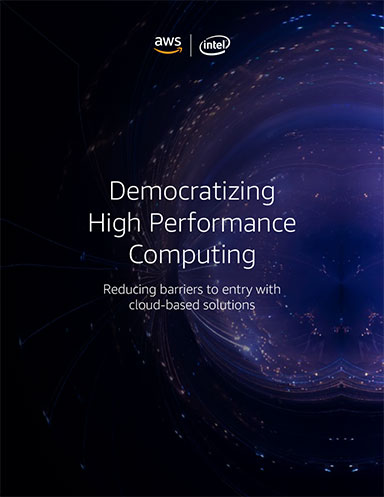Balancing Compute Resources
Understanding the nuances of various computing environments can aid in purchasing decisions.

Some simulation software vendors partner directly with hardware vendors. This HPC cluster appliance is configured with Ansys software as well as job management software. Image courtesy of Ansys.
Latest News
November 15, 2024
The decisions engineering teams make about computing resources can significantly affect project outcomes, timelines and budgets. Should product development rely on high-performance workstations, invest in on-premises high-performance computing (HPC) clusters or leverage cloud-based compute resources?
Each choice has its strengths and weaknesses, as does assembling a hybrid mix. By understanding the nuances of these different computing environments, engineering teams can make informed decisions that balance performance needs with budget constraints, ultimately enhancing their ability to innovate and bring products to market faster.
Assembling the Optimal Environment
When deciding between a workstation, HPC cluster or cloud environment for simulations and analyses, engineering teams must consider several key factors.
Rod Mach, CEO of TotalCAE, emphasizes the importance of application licensing constraints. “One of the first considerations is to look at your CAE application licensing, as today, many CAE applications are still licensed by the kind of hardware you run on.”
Workstation capabilities have significantly advanced, as Mike Leach, senior manager, Lenovo Workstation and Vertical Solutions, points out.
“Workstations today are desktop supercomputers, delivering the computational power of HPC clusters from just a few years ago,” Leach says.
Lenovo’s Christopher Ruffo, worldwide segment manager, Architecture, Engineering and Product Development, adds that workstations can “help augment existing HPC resources to ensure valuable data center resources are not wasted on designs not fit for purpose.”
For larger, more complex simulations, HPC clusters or cloud resources become advantageous. As Jacob Surber, vice president of Product at Rescale notes, “Cloud environments provide a compelling alternative, offering flexibility and scalability that traditional options can’t match. They allow teams to scale resources up or down as needed, paying only for what they use.”
The decision depends on several factors, notes Tim Lawrence, chief technology officer of BOXX Technologies, including the “size of the jobs, required time to completion and the number of jobs the department or company needs to process.” He adds that workstations are “usually less expensive than deploying an HPC cluster, and much easier to implement and manage.”
Ultimately, the optimal environment often depends on specific project needs, budget constraints and the scale of simulations being run. Many organizations find that a combination of resources provides the best balance of performance, cost and flexibility.
Performance Scaling and Efficiency
Performance scaling and efficiency vary significantly across different computing environments, and not all engineering software products scale equally. Lawrence of BOXX Technologies notes, “There is a cost to efficiently spread the simulation job out across multiple cores, and an even greater cost to spread the job out across multiple systems in a cluster.”
Mach of TotalCAE points out that “CFD workloads scale quite well on HPC clusters and cloud. Both run similar technologies, so there isn’t a major difference in performance. Each time you double the core count per CAE simulation you can half the runtime.”
However, he cautions that “most CAE vendors have special license add-ons to take advantage of more cores and GPUs for a single simulation.”
Rescale’s Surber emphasizes the importance of matching workloads to specific architectures: “Organizations need to match [new architectures] to the right workloads and do this on a continual basis—something that’s just not possible with a cluster or workstation model.”

The choice between environments often comes down to the nature of the workload. As Lenovo’s Ruffo explains, “Desktop workstations offer the most flexible solutions for a lot of engineers and designers—giving a balance between near data center performance and the confidence of a solution that can run CAD workloads as well.”
Hybrid Deployment Strategies
Hybrid deployment strategies, which leverage a combination of workstations, HPC clusters and cloud resources, are becoming increasingly popular among engineering teams. Surber notes, “Deployments that combine a mix of public clouds and on-premise resources are increasingly common among enterprises globally; 73% of IT organizations plan to utilize multiple environments.”
Mach highlights the advantages of a hybrid approach: “We have many clients that utilize hybrid for maximum workload flexibility at the lowest possible cost.” He adds, “Our clients couple this on-prem with on-demand cloud to access thousands of cores if they have only occasional need for more horsepower, or to access specialized instances.”
Lawrence notes that supplementing an engineering team’s workstations with additional resources like HPC adds capacity and enables long jobs to be offloaded from workstations to keep them available for other engineering tasks.
Determining which workloads are most suitable for each computing environment involves careful consideration of technical requirements and cost factors. Benchmarking representative workloads on different workstations, clusters and cloud platforms is an ideal way to determine if typical jobs will run and how long they will take to complete.
It is important to optimize for performance and cost. Many organizations looking for ways to keep computing costs low on a core-hour basis end up incurring costs elsewhere, whether they’re real costs from inefficient use of software licensing or indirect costs like delays from queued or slowed workload results.
Total cost of ownership and return on investment must be considered. As Leach notes, “Cheap can so often become expensive long term,” especially when today’s workstations have been purposely designed and engineered to deliver maximum value, end to end.
IT teams should factor in the overhead costs associated with maintaining hardware and software on an ongoing basis.

Throughput and Hardware Challenges
Engineering teams face several hardware and IT-related challenges when it comes to throughput in their computing environments. Lawrence of BOXX Technologies highlights a key issue: “The proximity of the data to the compute resource can impact performance. Larger groups should pay attention to where their data is, as well as the network speed and capacity between the storage devices and computing devices.”
Mach emphasizes the importance of data transfer capabilities, especially for cloud computing: “Cloud vendors all have fast data transfer options, but not all IT groups have invested in this networking technology or have it in the correct place to access HPC cloud resources.” He adds, “No technology can overcome the physics of the time it takes to click a mouse, to go to the data center and back to the user if there is not adequate network bandwidth and latency, which is a surprisingly common issue even for larger enterprises.”
As engineering computing continues to evolve, the balance between workstations, HPC clusters and cloud resources remains a critical consideration for teams of all sizes. Each option offers distinct advantages, and the optimal solution often involves a hybrid approach tailored to specific needs and workloads.
Key factors in decision-making include software licensing constraints, scalability requirements, data management needs and cost considerations. As artificial intelligence and machine learning increasingly integrate with traditional engineering workflows, the landscape will continue to shift.
In the final analysis, the goal is to create an environment that maximizes productivity, minimizes bottlenecks and provides the flexibility to adapt to changing project demands. By carefully evaluating needs and leveraging the strengths of each computing resource, engineering teams can optimize their workflows and drive innovation forward.
More BOXX Technologies Coverage
More Lenovo Coverage

More Rescale Coverage

More TotalCAE Coverage
Subscribe to our FREE magazine, FREE email newsletters or both!
Latest News
About the Author
Randall S. Newton is principal analyst at Consilia Vektor, covering engineering technology. He has been part of the computer graphics industry in a variety of roles since 1985.
Follow DE







